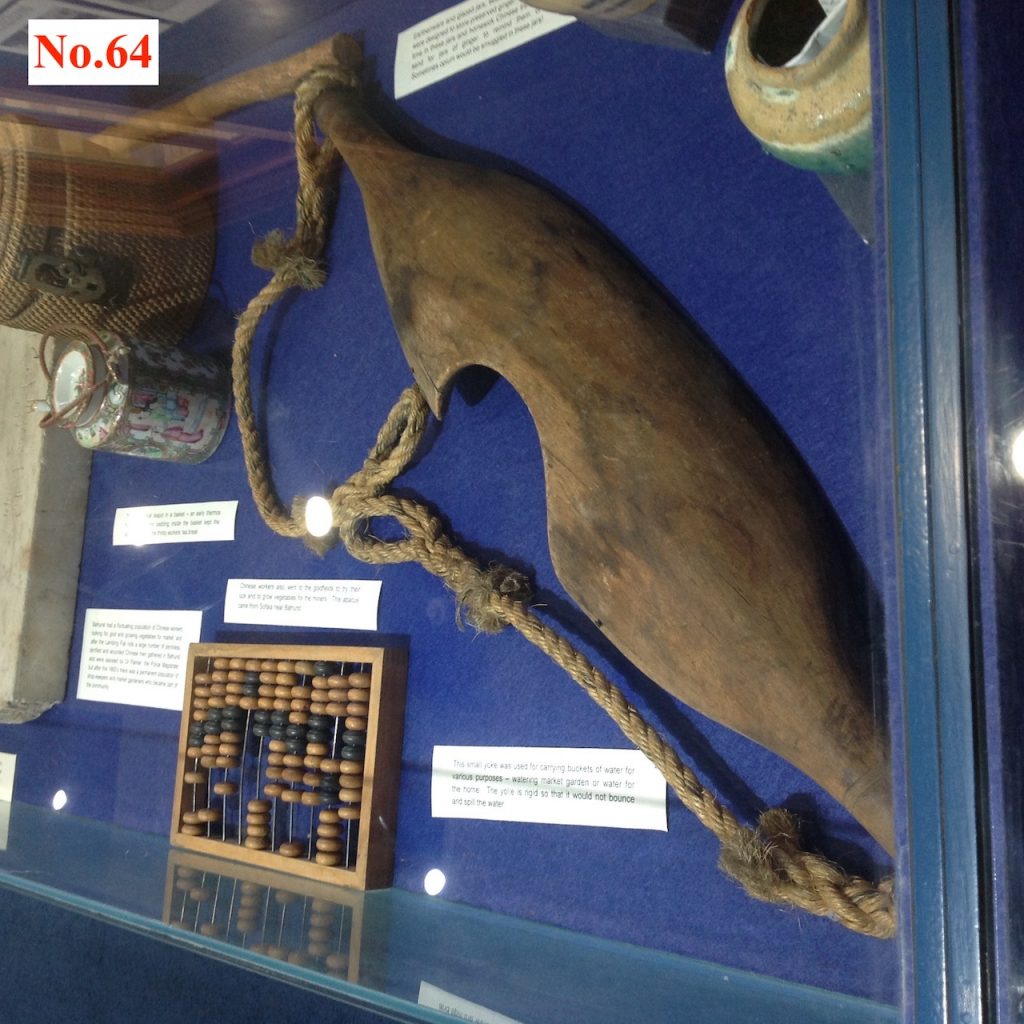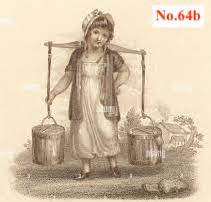
This wooden neck yoke is on display in the Bathurst Historical Society Museum and while it doesn’t say it is a ‘Chinese yoke’ it is in the ‘Chinese’ display case along with other objects associated with Chinese people. Certainly, any number of similar (neck/milkmaid) yokes are to be found in many local history museums and many, if not all, are labelled ‘Chinese’. (See No.3) This labelling is all the more remarkable in that numerous pictures exist showing Chinese people carrying loads on a ‘shoulder pole’, that is, one that rests on one shoulder only.

There is in fact at least one image of a Chinese man using the ‘two shoulder’ or neck yoke. But this is to be compared to the many images that show a variety of non-Chinese people also using them. Why then are these non-Chinese yokes routinely attributed to Chinese people? Is it simply that the stereotype of Chinese people as market gardeners is so strong that any implement such as this can only be conceived as “Chinese”? (See No.21) It would also appear that a form of mass amnesia has occurred about anyone in Australia other than Chinese people using this kind of yoke. Some reasoning along these lines seems to have occurred: ‘using a yoke is hard work, we know the Chinese worked hard, therefore this is a Chinese yoke’.

Any good post-modernist will tell you that the myths a people tell about themselves and others are as informative as the ‘facts’ an obsessive historian likes to cling to. That the type of yoke pictured is so often associated with Chinese people certainly tells us that the stereotype of ‘hardworking’ and ‘market gardening’ dominates. Another point of interest is that North Americans, at least on their east coast, have no trouble associating this yoke type with Europeans and European-Americans. Presumably because of a relative lack of an historical ‘memory’ of Chinese people carrying loads on any variant of yoke or pole.
Nevertheless, at least two Bathurst locals do claim to have seen Chinese people using the yoke type pictured. This raises two interesting possibilities: 1) That Chinese market gardeners did adapt to the use of the ‘two shoulder’ yoke – whether purchased or made by themselves.[1] 2) That memories conflate and yokes are being attributed according to a stereotyped imagining. (See also No.66)
[1] This is suggested by Joanna Boileau, All that glitters is not gold: The Chinese in the Banana industry in Northern NSW, 1916-1926 (November 2009, UNE, Armidale), pp.30-31.

